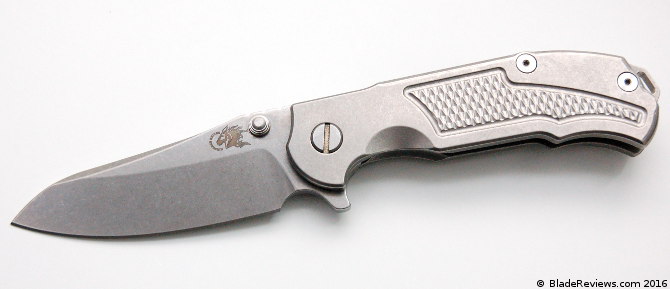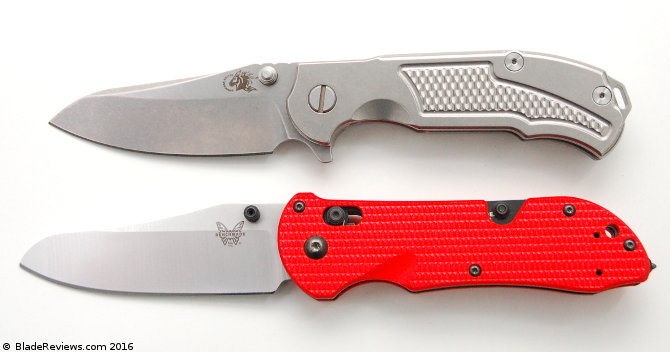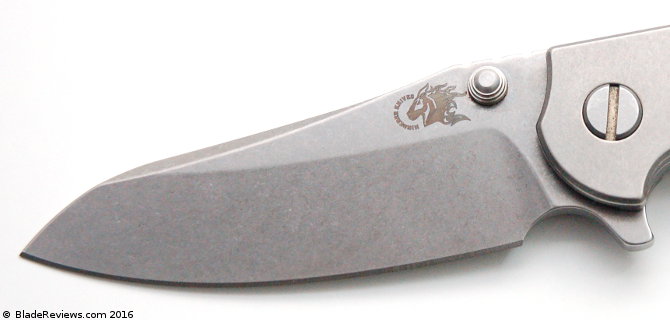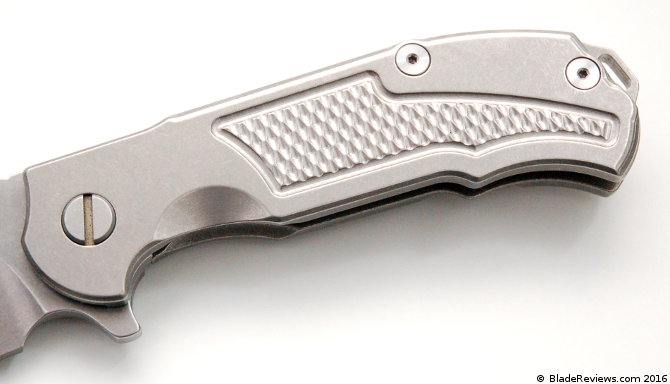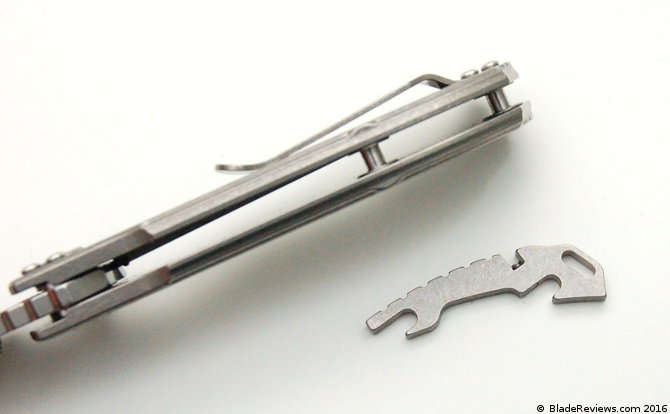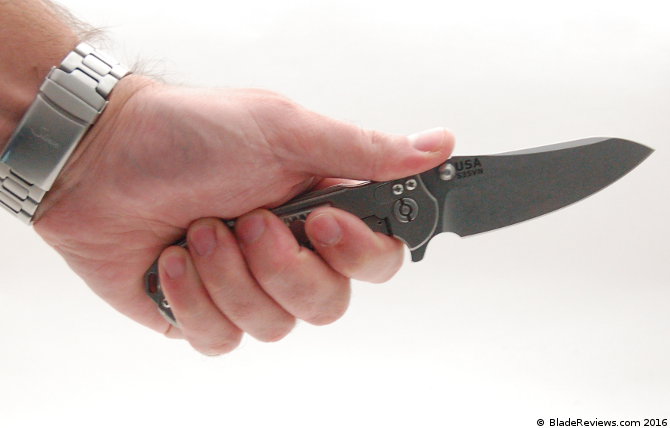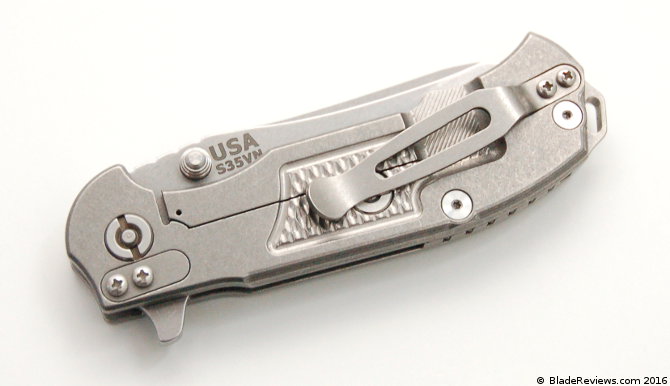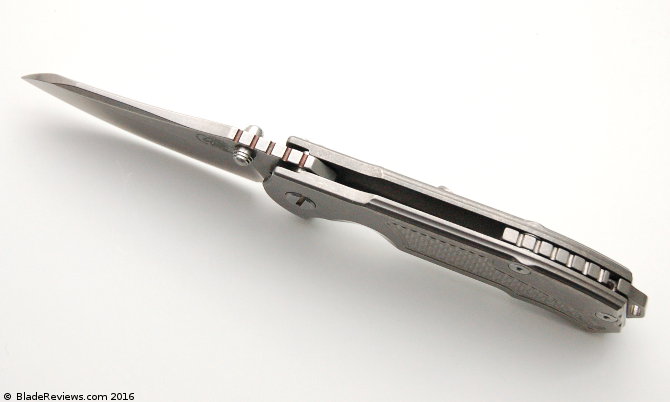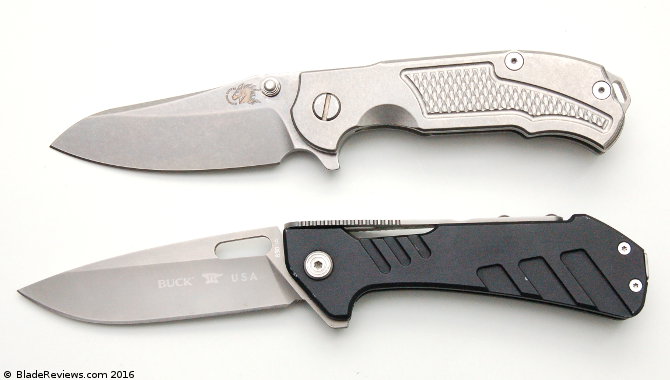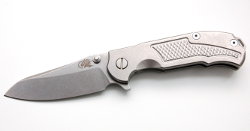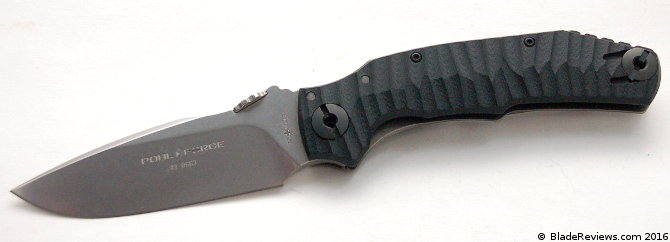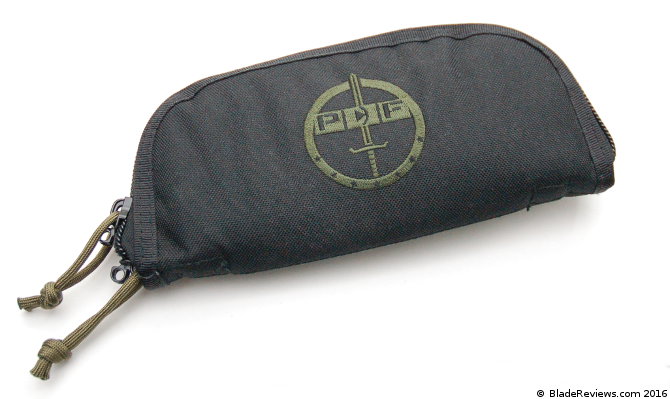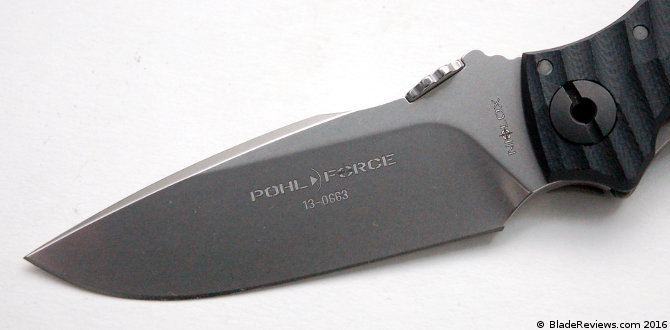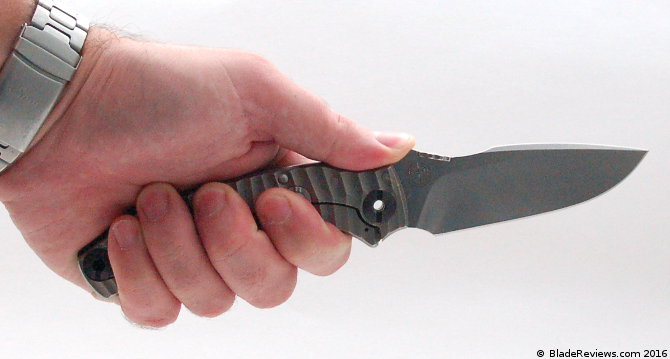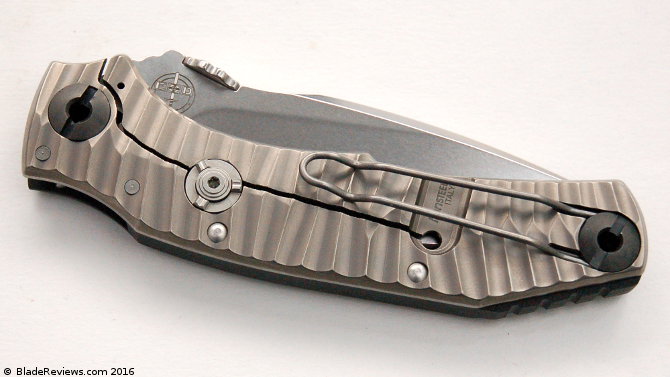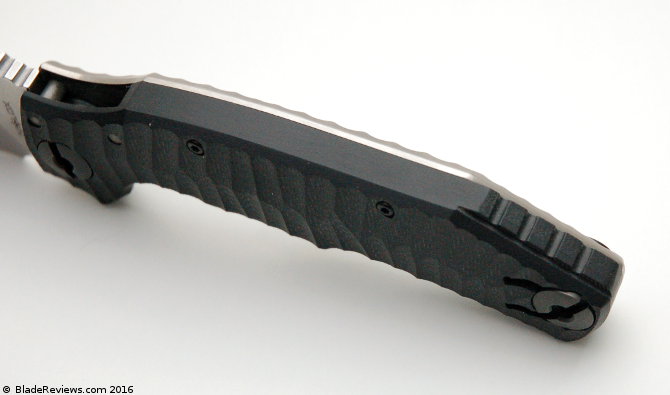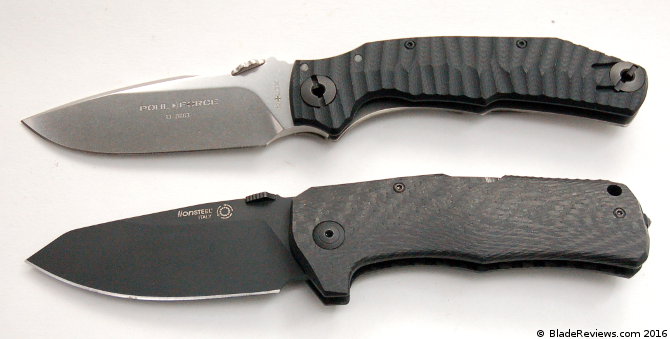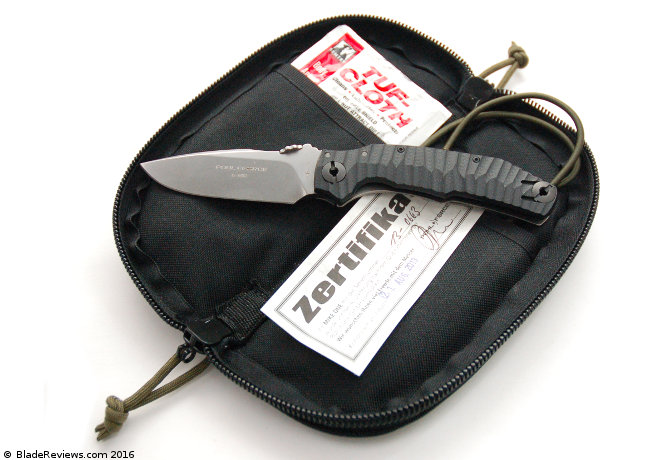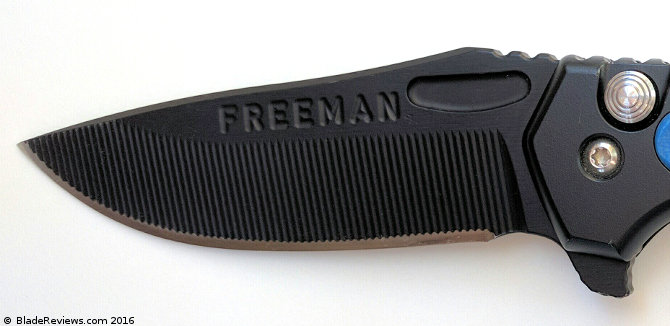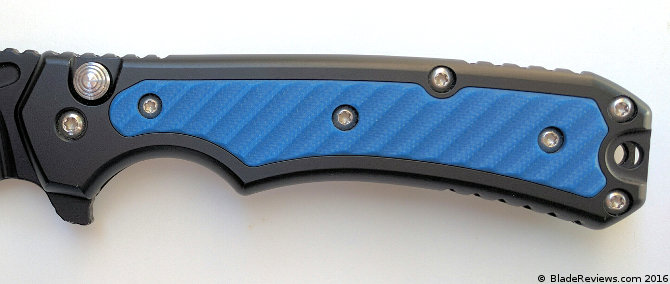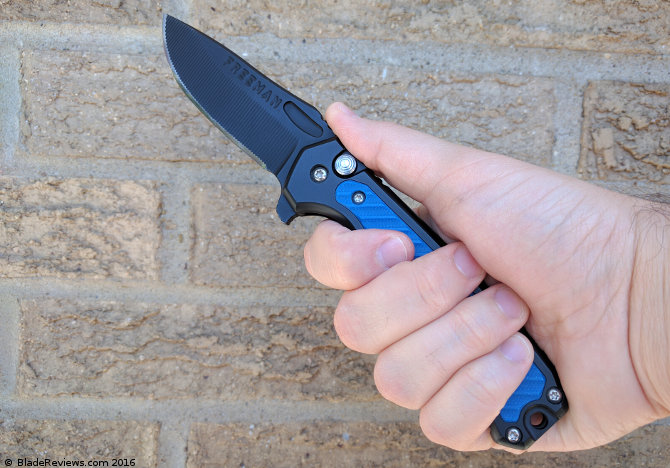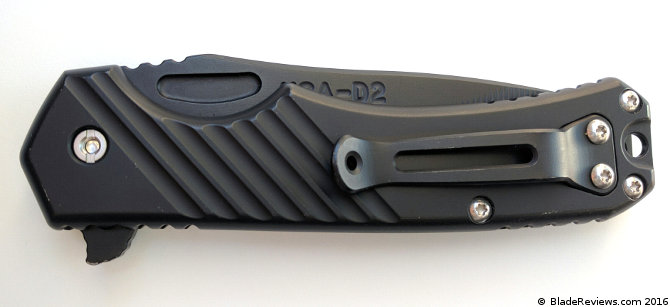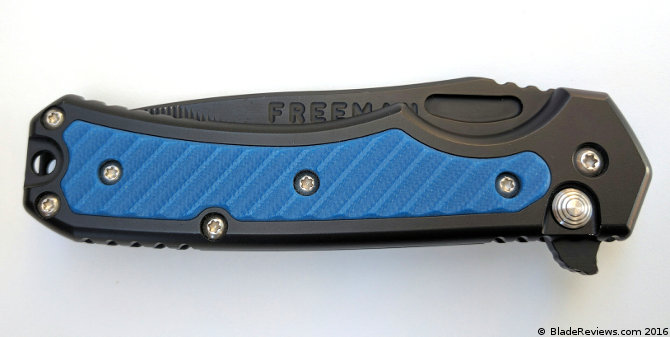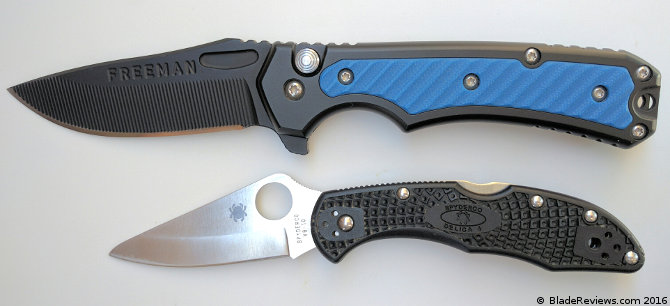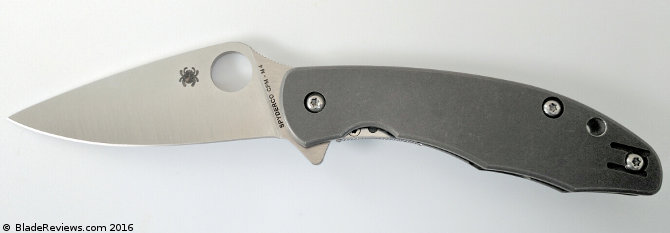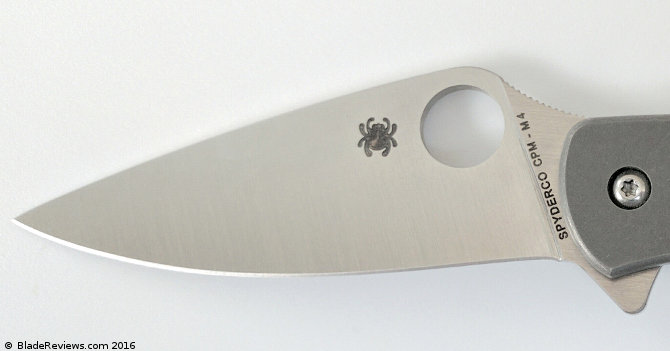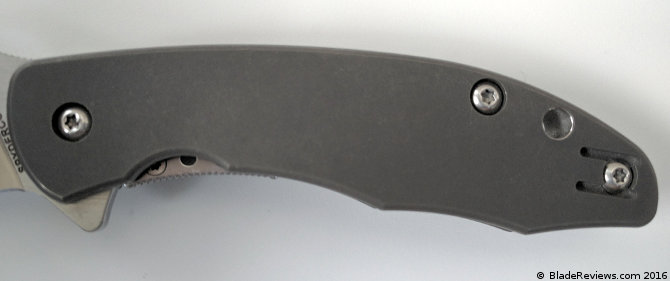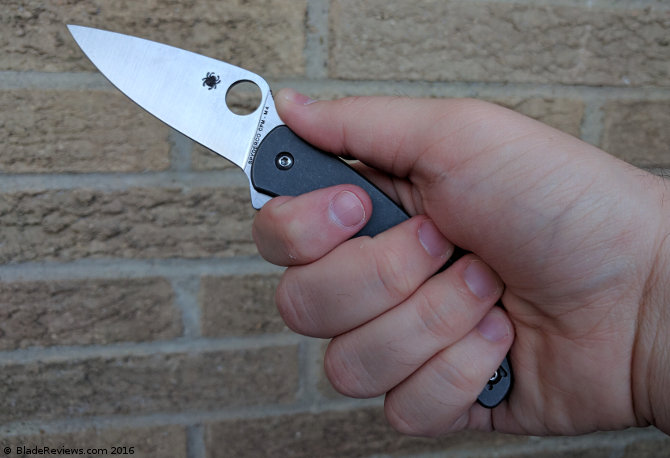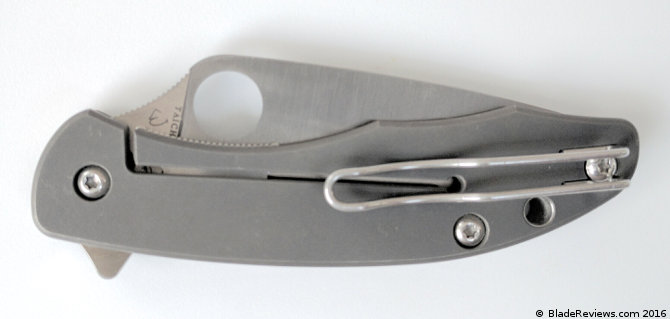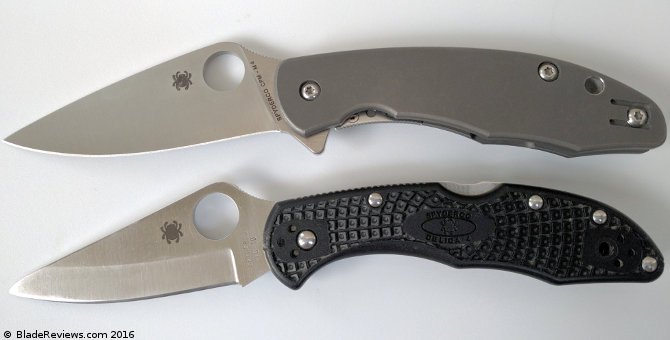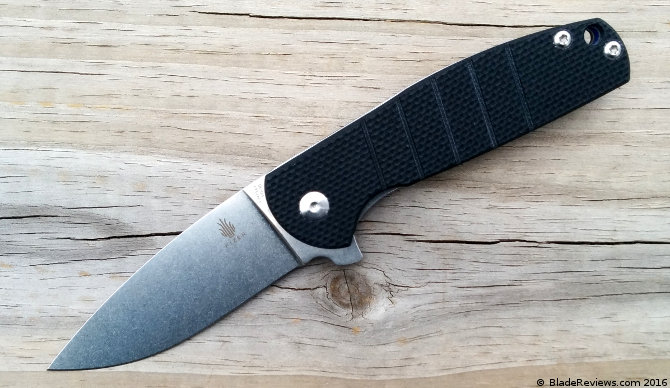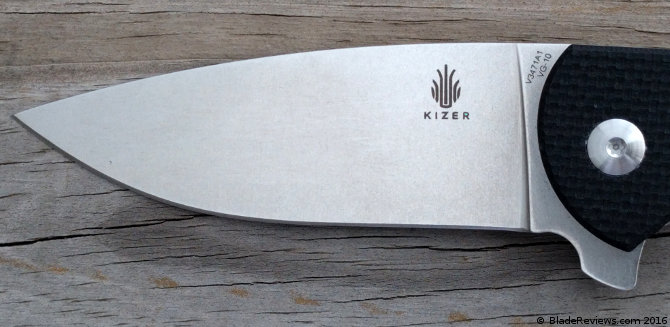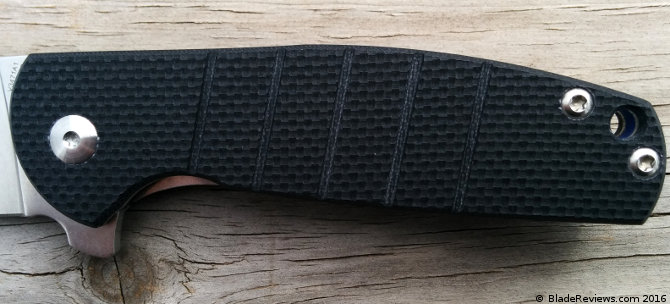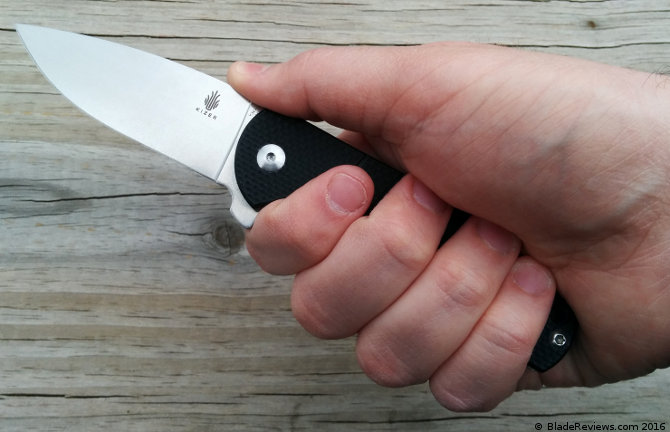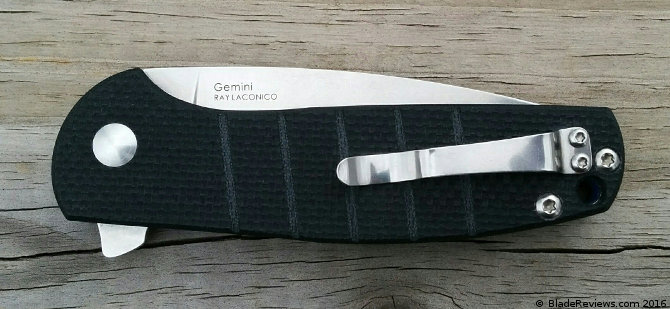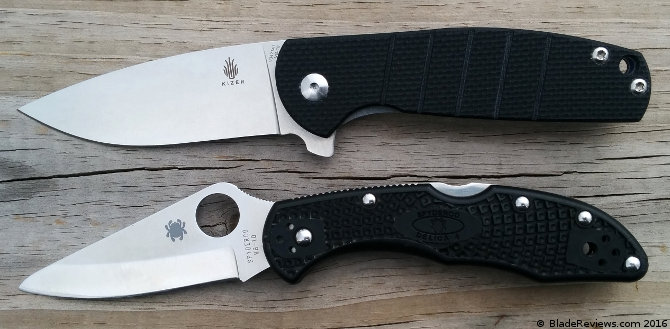Last Updated: August 12, 2019
The high end Chinese Renaissance has been blossoming for a couple years, and Kizer is arguably the Michelangelo of the movement. Yet there hasn’t been much coverage here of this rapidly expanding segment of the market. Ben has capably covered a couple knives from Kizer including the original Ki3404-A3 and the Vanguard version of the Gemini. I have been curious about Kizer myself, and recently acquired a Rogue and an Intrepid, the subject of this review.
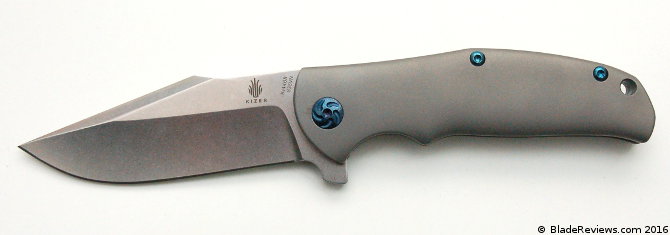
Buy the Kizer Intrepid at BladeHQ
No products found.
Like the Gemini, the Intrepid is another collaboration with custom knifemaker Ray Laconico. But rather than this being a knife from the more affordable Vanguard series, we have the premium offering here replete with S35VN blade steel and sculpted titanium handles. What I find interesting about Kizer knives is their singular focus on quality. This fanaticism has gone so far that they import their materials from the United States and Japan. That doesn’t sound at all like the Chinese manufacturers of yesteryear. I think a review of a modern high end Kizer is long overdue here.
General Dimensions and Blade Details
The Intrepid has an overall length of 8.25″, a 3.625″ blade, weighs 5.64 ounces, and is made in China. This is the bigger brother to the Gemini, which has a 3.125″ blade a weight of 3.65 ounces, and a much simpler and more “socially acceptable” profile. Although the Gemini is a more practical Every Day Carry (EDC) option, I wanted to check out the Intrepid because we already have an excellent review of the Vanguard version by Ben. Tony does a great job as usual with his review of the dress version.
The Intrepid is bigger and badder than the Gemini, and it features a large modified clip point blade. I always enjoy a good clip point, and this one is no different. Actually, it’s a little different in that the blade has a harpoon, but it works much like a regular clip point. The draw to the harpoon is that it makes for a good thumb rest and funkier looking knife. I like the unique blade shape. The hollow ground blade gets thin behind the edge, and the edge itself has been evenly ground. The swedge and belly meet to form a needle sharp tip. Although they are more aggressive looking, clip point blades are well rounded performers, and this blade is great for a variety of tasks.
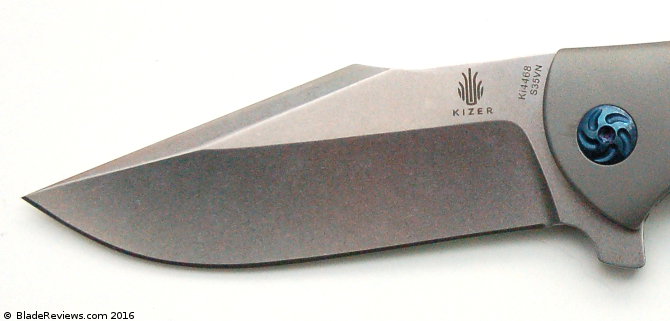
Kizer selected CPM-S35VN steel for the blade. S35VN is a popular choice, and I’m glad to see it here. This is an American steel made by Crucible with input by Chris Reeve, and the end result is a blade steel that is a little tougher and easier to sharpen than S30V. It also finishes nicely, and the blade of the Intrepid comes with a nice stonewashed finish.
I have carried and used my Intrepid extensively. I continue to be impressed by the ease of maintenance and edge retention on S35VN. My knife came sharp straight out of the pouch and I have used it for a variety of domestic chores including breaking down boxes, working around the house, and a little woodworking now that the weather here in Florida has finally cooled off.
Handle, Ergonomics, and Pocket Clip
S35VN blade steel is all well and good, but what really impresses me with the Intrepid is the handle. Here we have full 3-D contoured titanium handles. These handles are milled, not cast, and if you look closely you can see the cutter path You just don’t see much of this. Probably the closest competitor I have reviewed with contoured titanium handles is the Spyderco Slysz Bowie. The Slysz Bowie is immaculate, but it’s also nearly $100 more than the Intrepid.
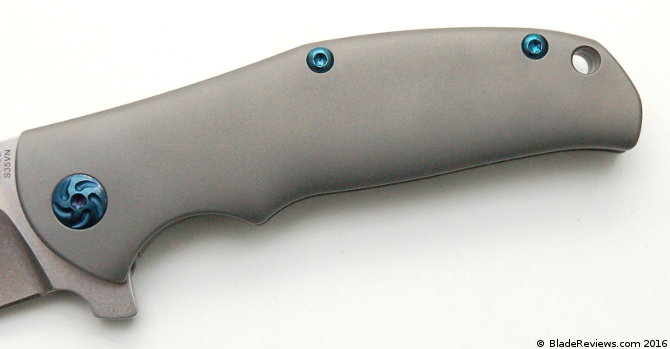
This 3-D contoured handle comes with all the fixings you would expect in a premium titanium framelock flipper: oversized pivot, steel lockbar insert and overtravel stop, and a blue anodized titanium backspacer. Fit and finish is perfect on my knife.
Being a larger knife, the Intrepid has plenty of room for your hand and should accommodate most people with ease. The finger groove and broad spine both naturally draw in your hand. This is a comfortable piece that works well. There isn’t much in the way of a “traction plan”, but somehow the knife has managed to stay in my hand. The bead blasted titanium offers a little traction, and in my opinion the lack of jimping is a pleasure, not a curse. If you want something a little higher traction then I’d probably suggest the G10 handled version.
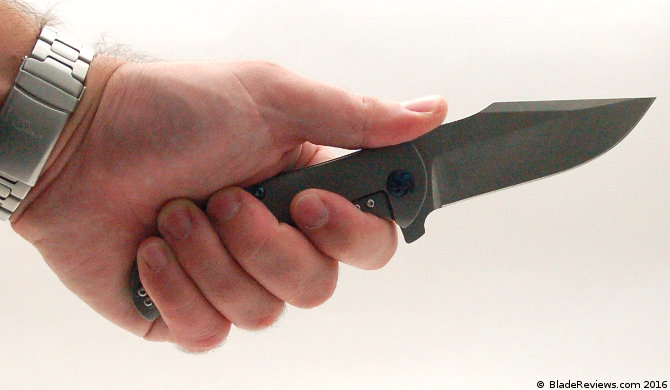
The pocket clip is understated when compared to the rest of the knife. This is a simple folded titanium clip, and the only adornment is the fact that it has been anodized blue to match the hardware and backspacer. That’s OK with me because the clip works. It has excellent spring retention and the knife stays firmly in place – even when clipped to lighter fabrics. This is a big knife, but it carries like a smaller blade thanks to the strong clip and slim handles.
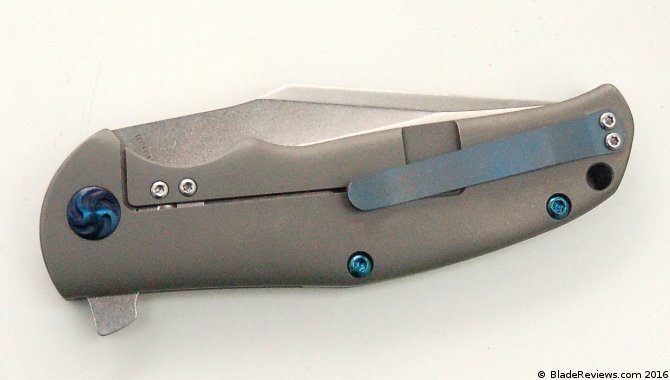
The only potential negative is that the handle is only drilled and tapped for right side tip up carry. Not a problem for me, and I’d hate to see them drill any more holes in this handle than absolutely necessary.
Deployment and Lockup
The Intrepid is a flipper on caged ball bearings. The bearings are smooth and the blade flips with authority. For people that like metrics, I’d say it’s a strong “8” on my 1-10 flipper action scale. It flips only crisply and reliably every time. The flipper tab is large, angled, and easy to get at. There is no jimping on the flipper tab, but once again we don’t need it. Clearly the guys at Kizer have spent some time studying the American flipper market and know what we want. This thing sings.
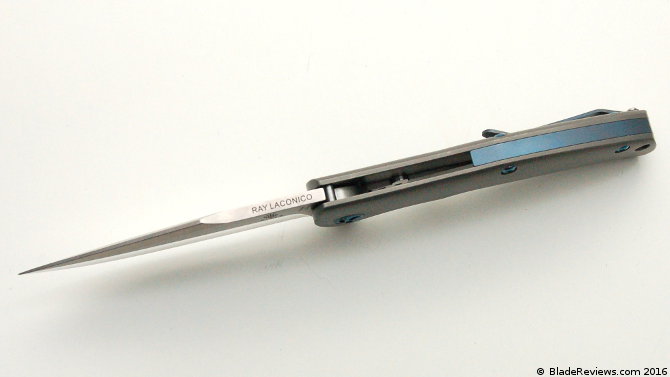
For lockup we have a titanium frame lock. This lock has been outfitted with a stainless steel insert that doubles as a lockbar stabilizer, much like the Spyderco Domino and some of the Zero Tolerance flippers. Lockup is early without being too early, and secure without being sticky. Lockup is also rock solid. No blade play, no wiggle, and no tweaking required. I’d say the flipping action and lockup is on par with Zero Tolerance, a company known for making some of the best production flippers in the business.
Blade centering is perfect on my knife.
Kizer Intrepid Review – Final Thoughts
I was wrong to wait so long to check out these Kizer flippers. The Intrepid has everything I look for in a titanium framelock flipper and then some. Here we have a great design, premium materials, superb fit and finish, nice details, and a dialed in flipper. This is a bigger knife, but it carries like a smaller knife, and for a little over $200 you are getting a lot for your money. The 3-D machined handle is what sets the Intrepid apart. Offhand I can’t think of any production titanium framelock flippers with fully contoured titanium handles.
Here is a shot of the Intrepid next to the Hinderer MP-1:
The Intrepid is about the same size and thickness as the recently reviewed Hinderer MP-1, but it feels slimmer and more than .2 ounces lighter (the difference on paper). Granted the Hinderer is a tank and this is something of an apples to oranges comparison, but I still find it interesting to juxtapose these knives. The build quality on the Hinderer is superior, but the Intrepid is a special knife in its own right.
I recommend Intrepid if you are looking to scratch that higher end titanium frame lock flipper itch. There is a lot to like here, and again I can’t think of another flipper that has a handle like this.
I think the Vanguard version will also be a good buy if you want something at a more approachable price point. And check out the Gemini if you are wanting a more urban friendly EDC. Either way I don’t think you will be disappointed with these Kizer / Ray Laconico collabs.
No products found.
I recommend purchasing the Kizer Intrepid at Amazon or BladeHQ. Please consider that purchasing anything through any of the links on this website helps support BladeReviews.com, and keeps the site going. As always, any and all support is greatly appreciated. Thank you very much.

